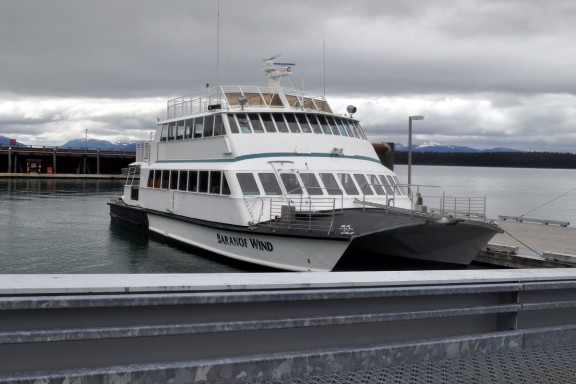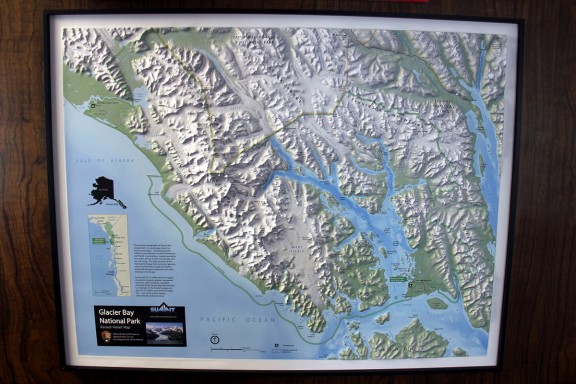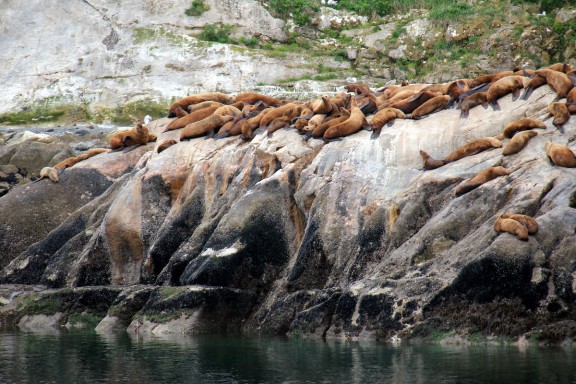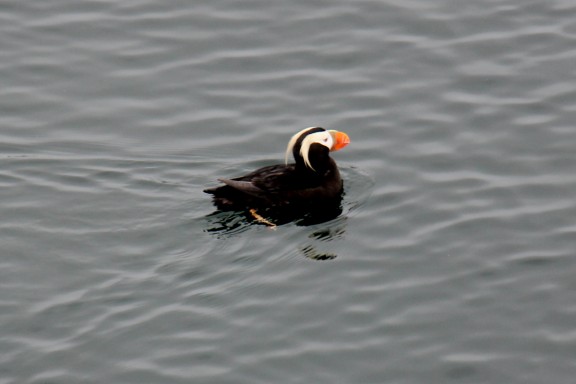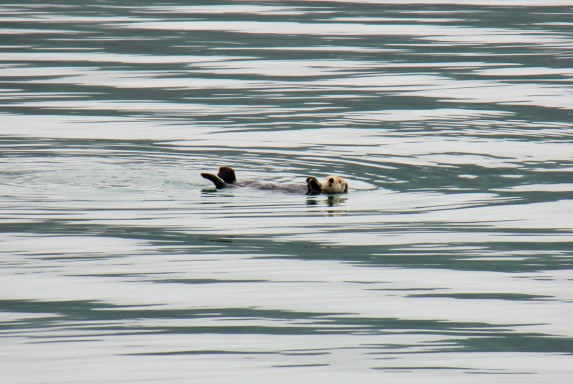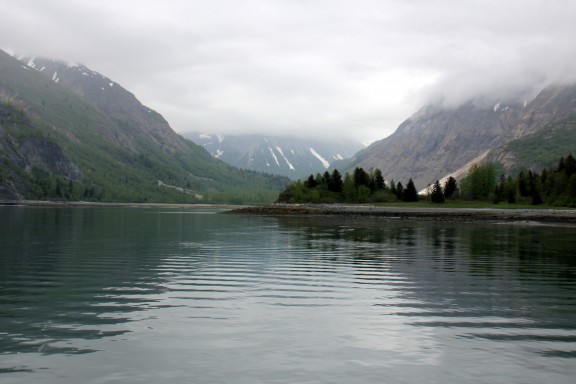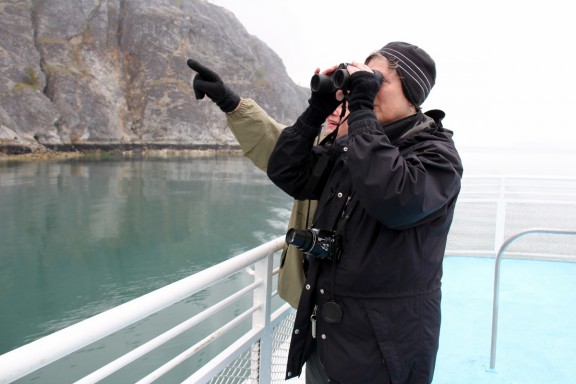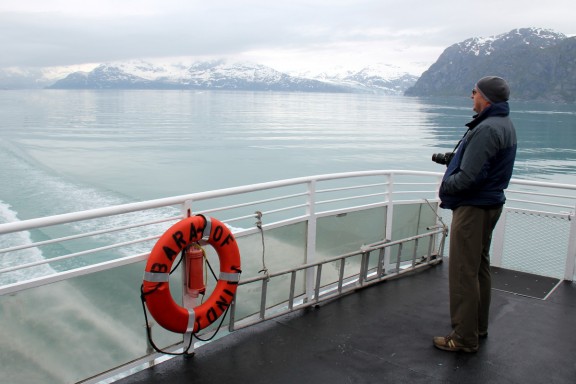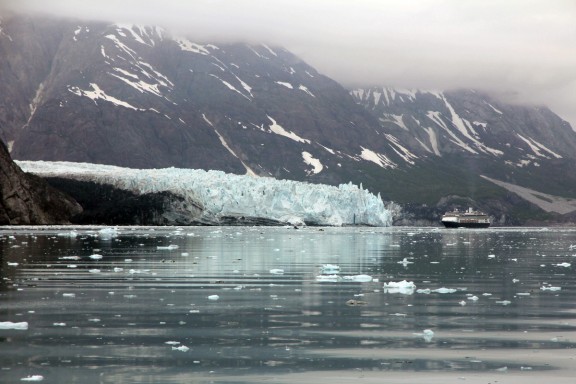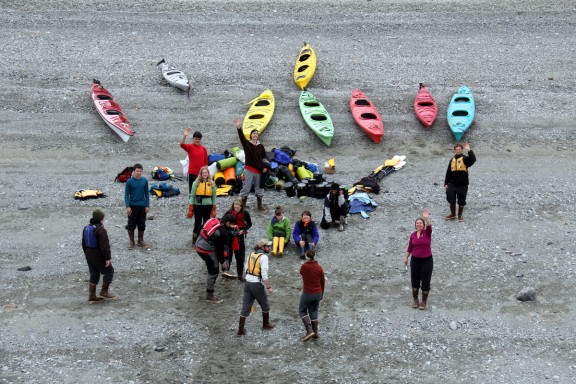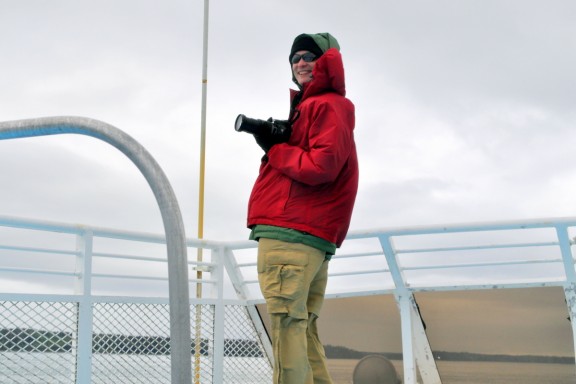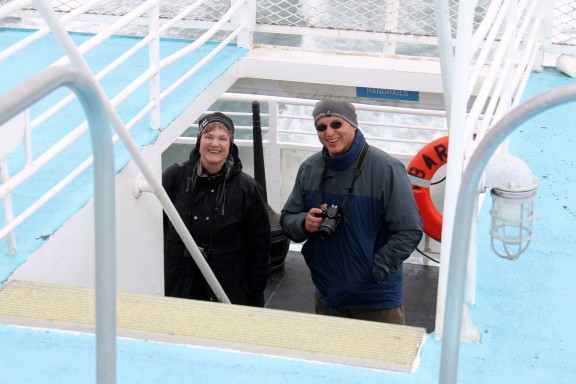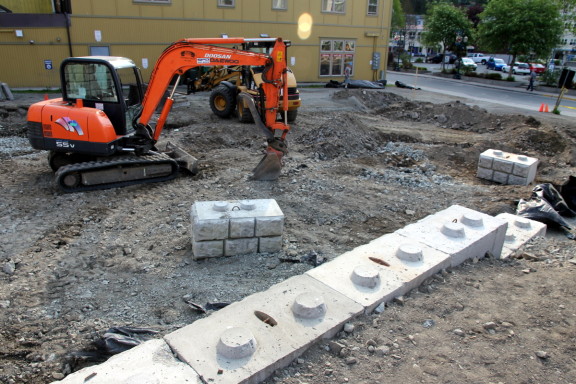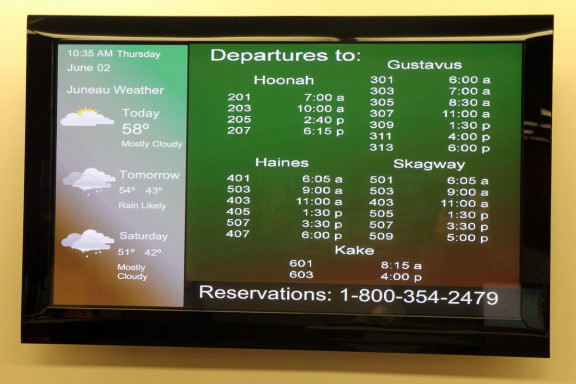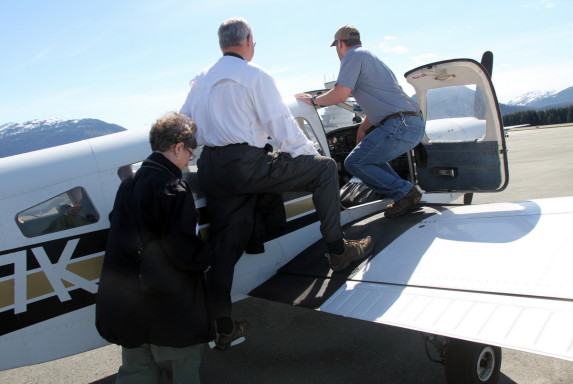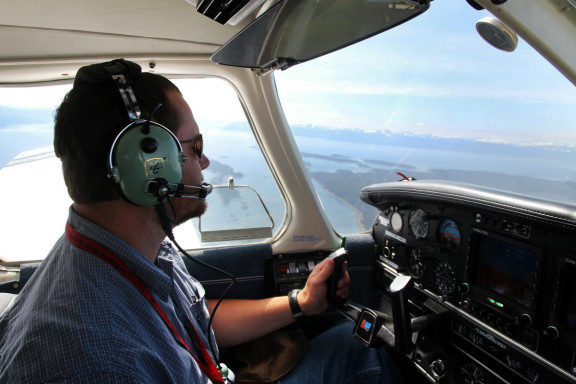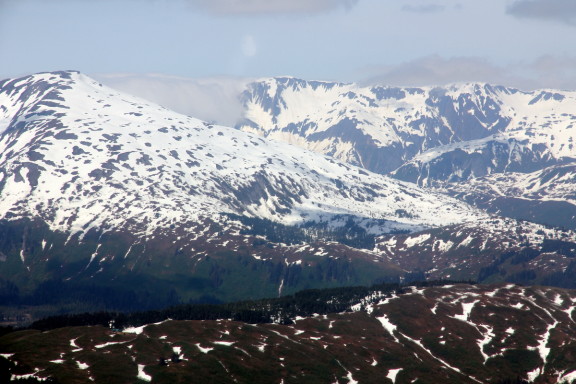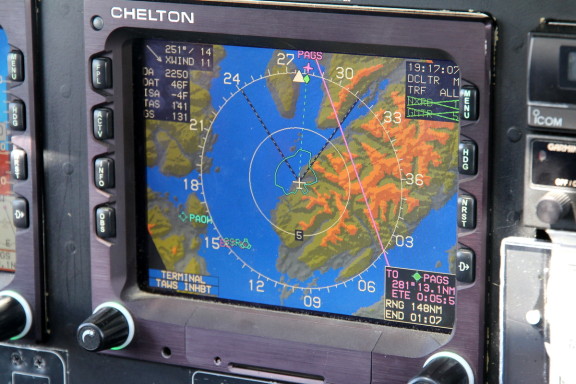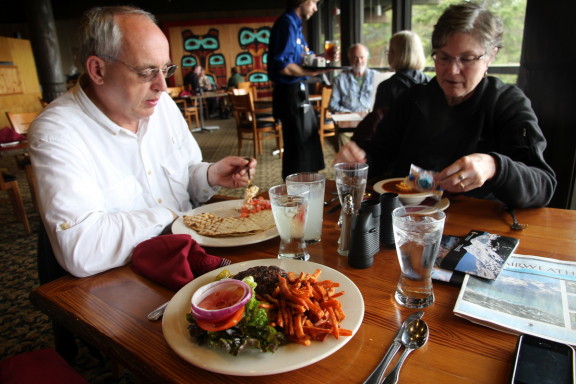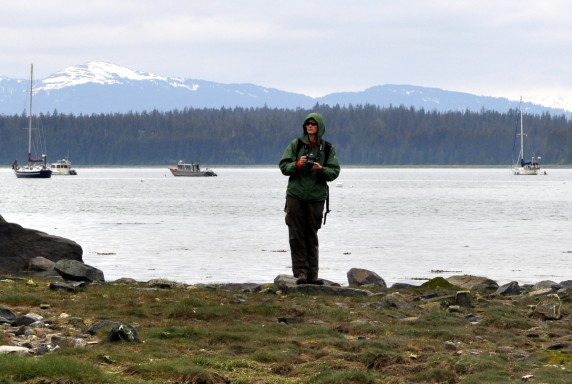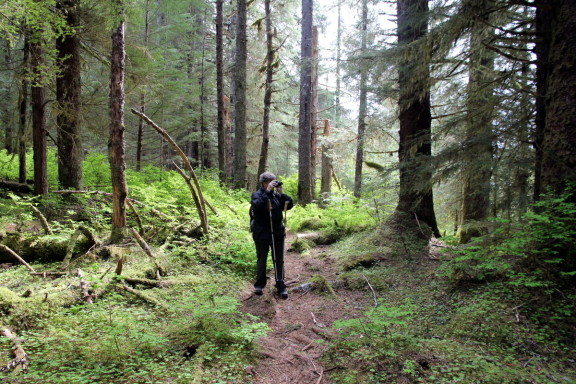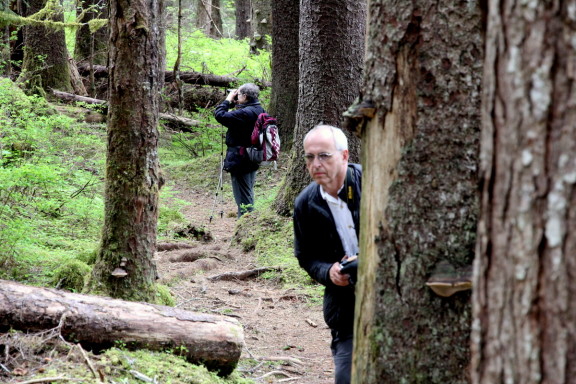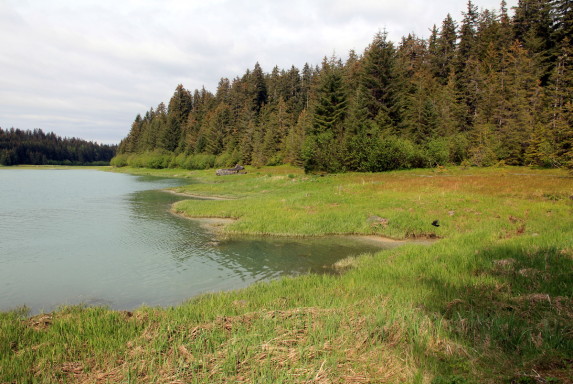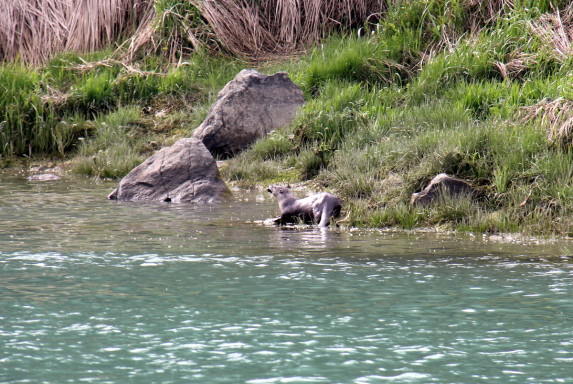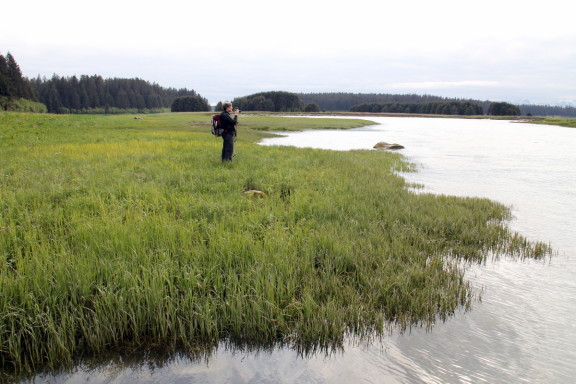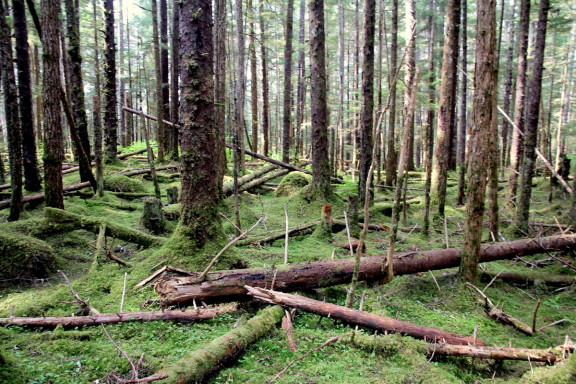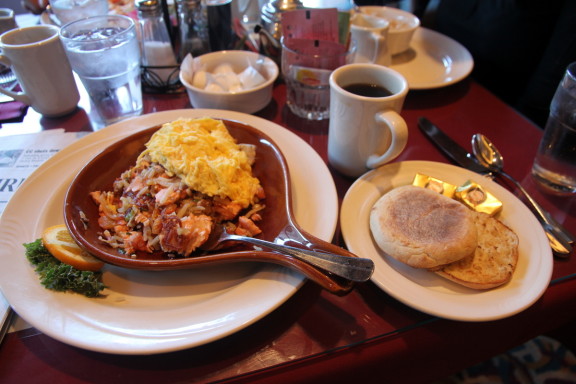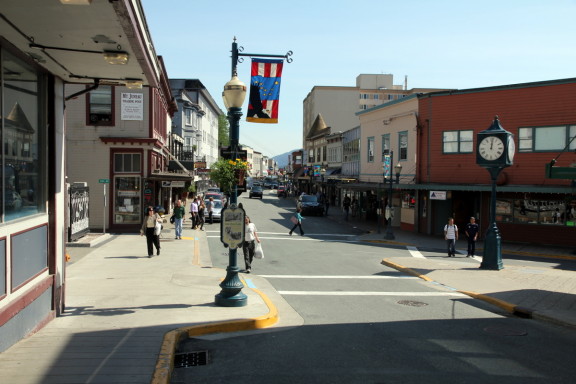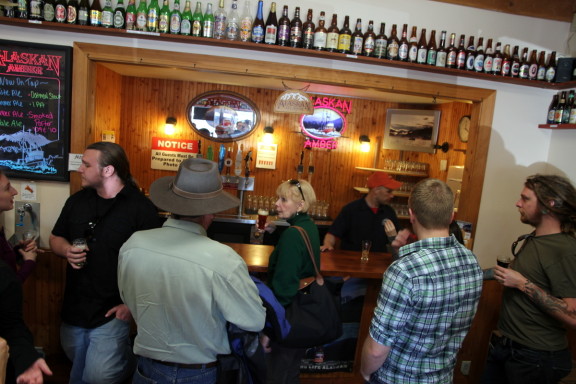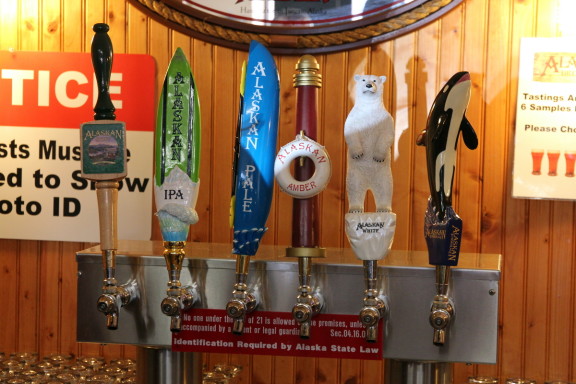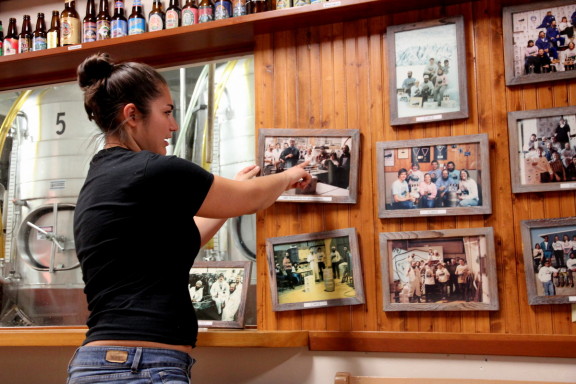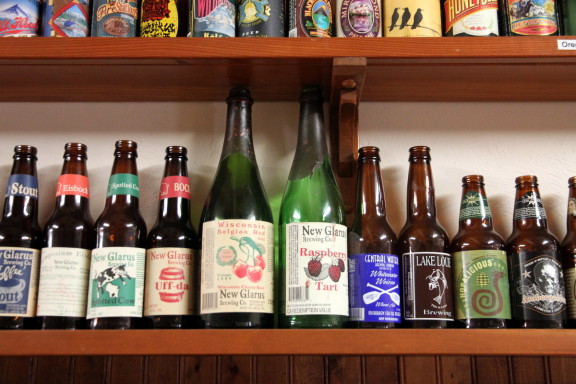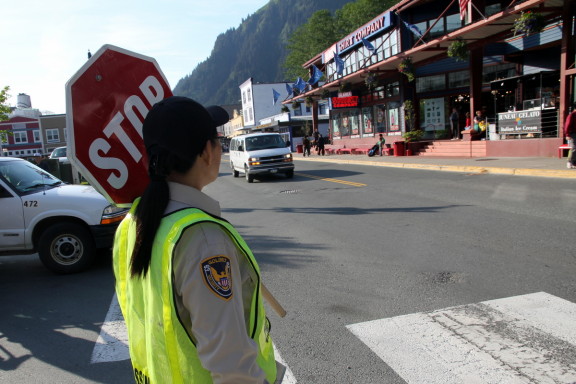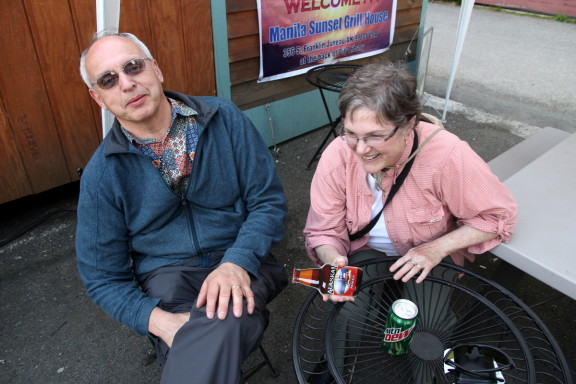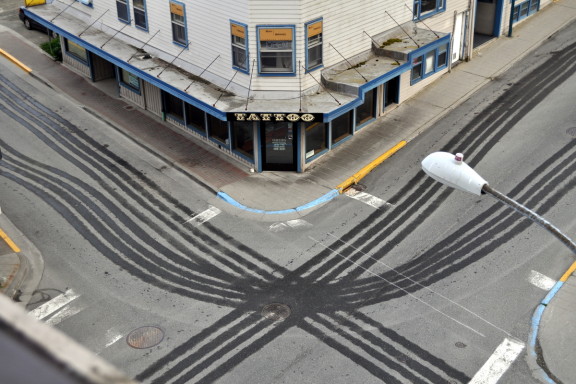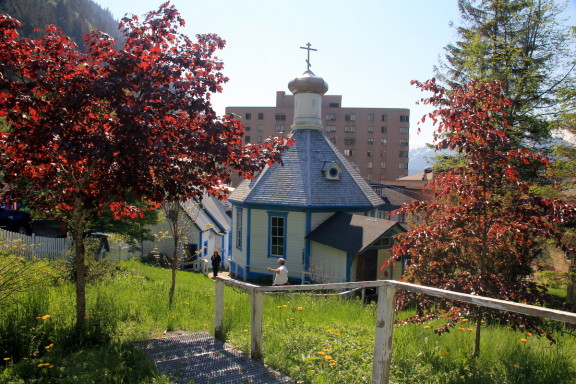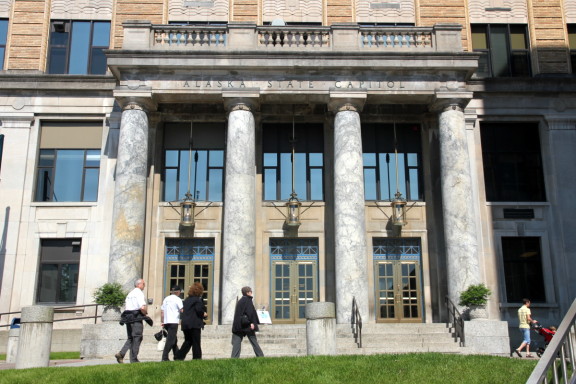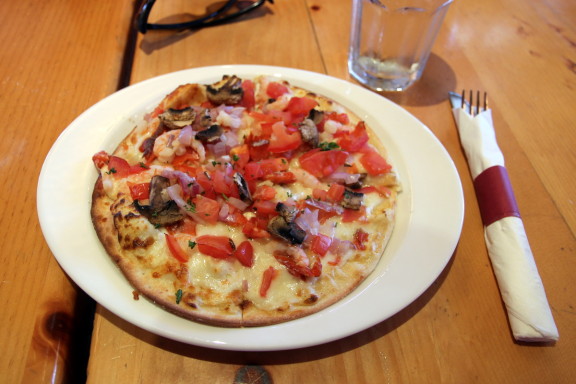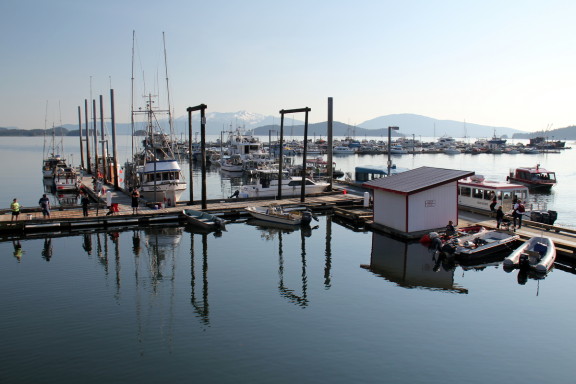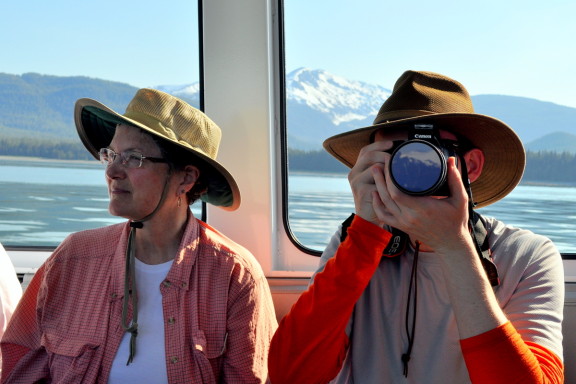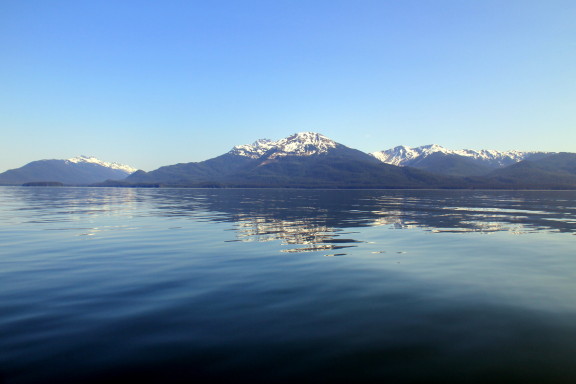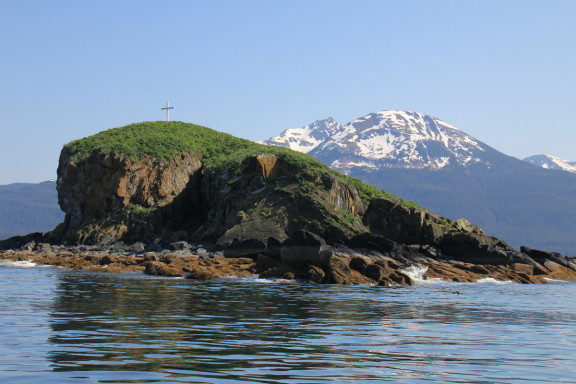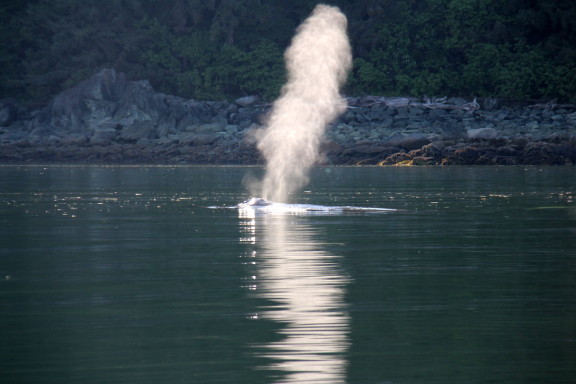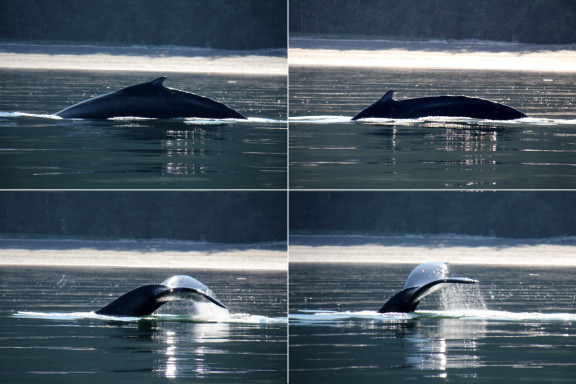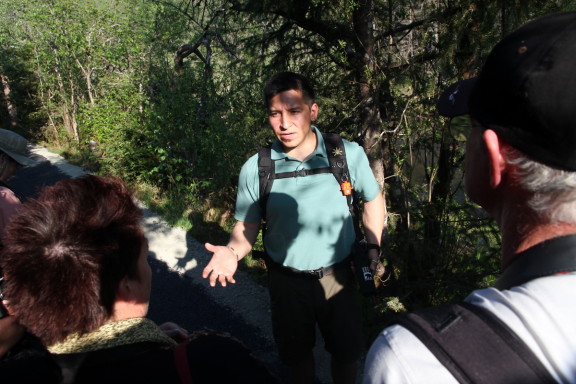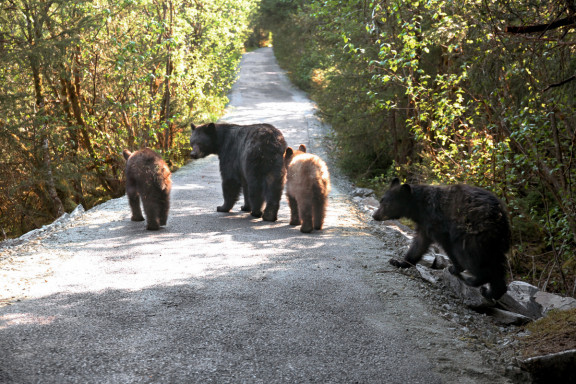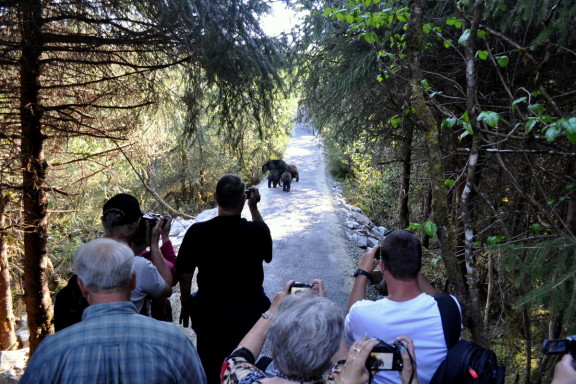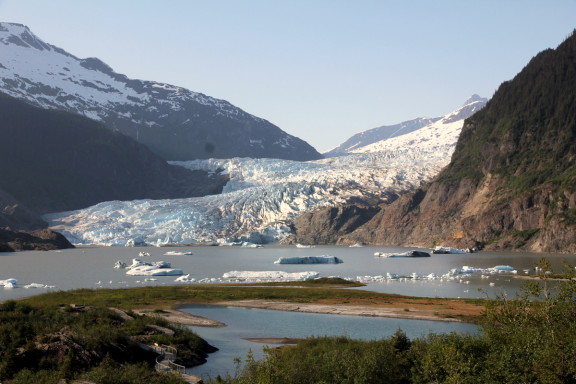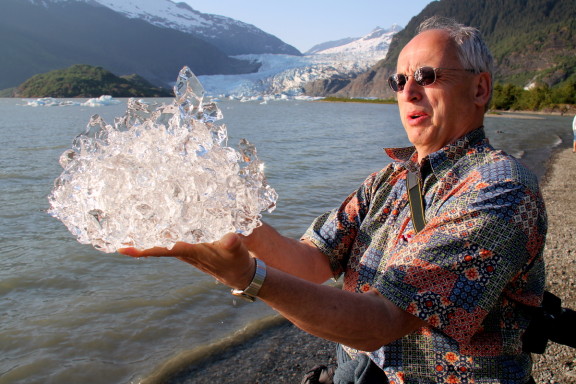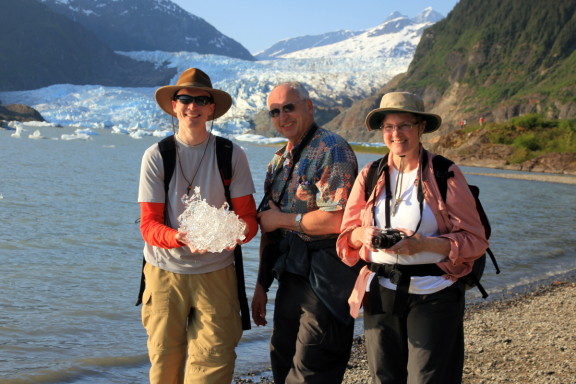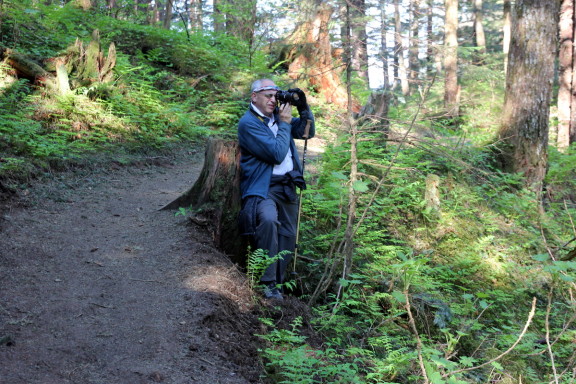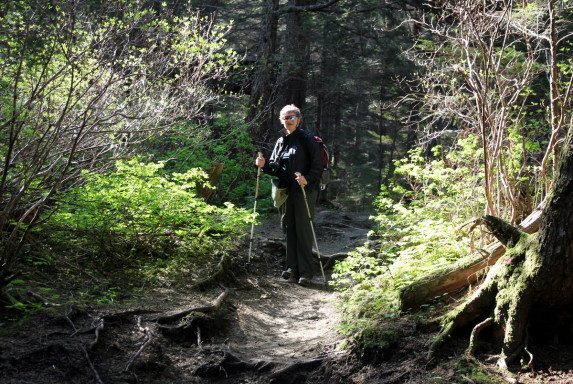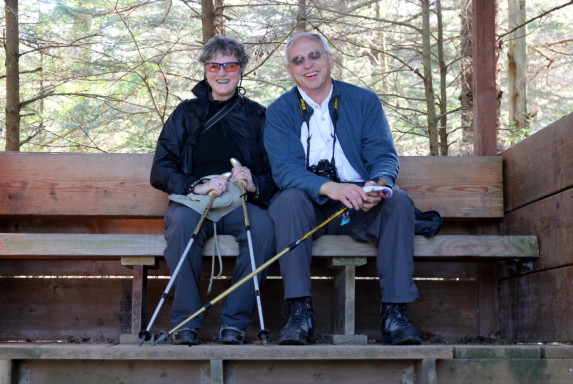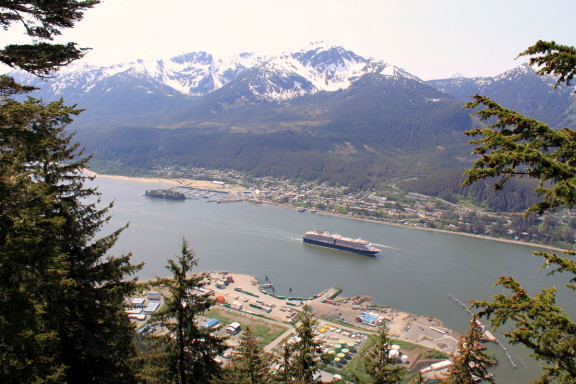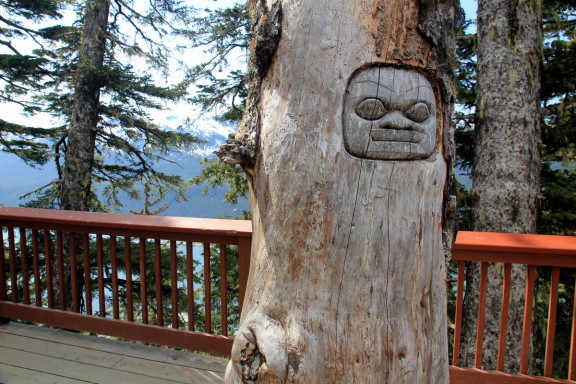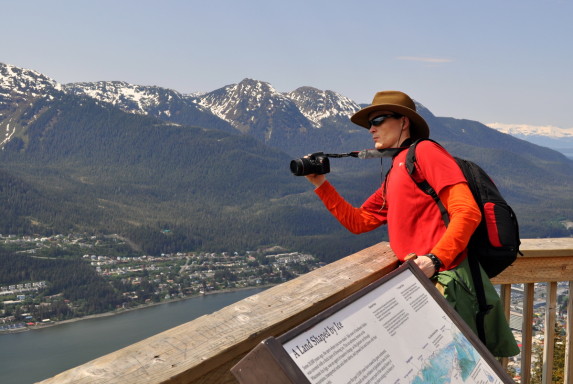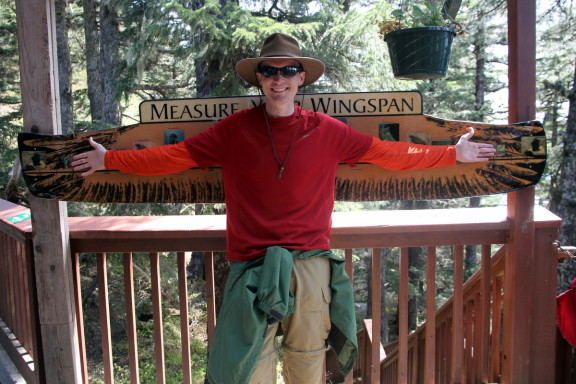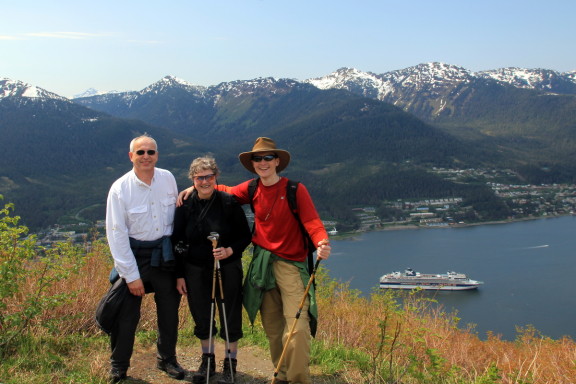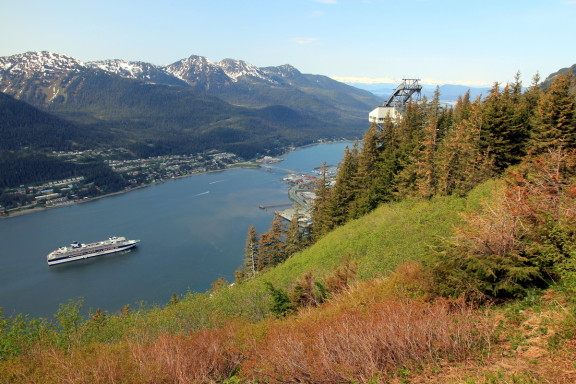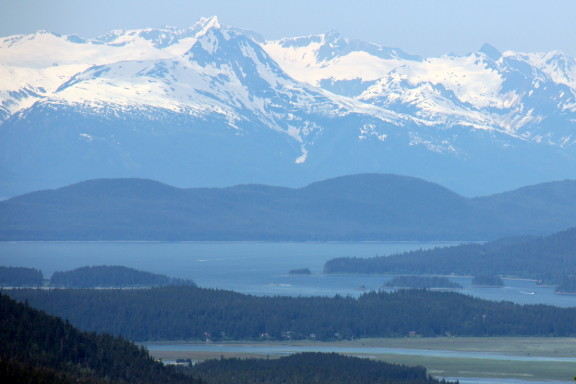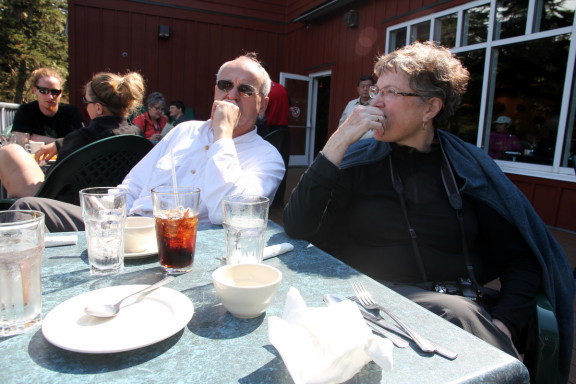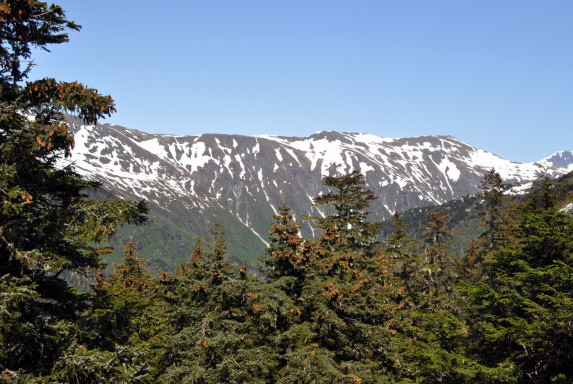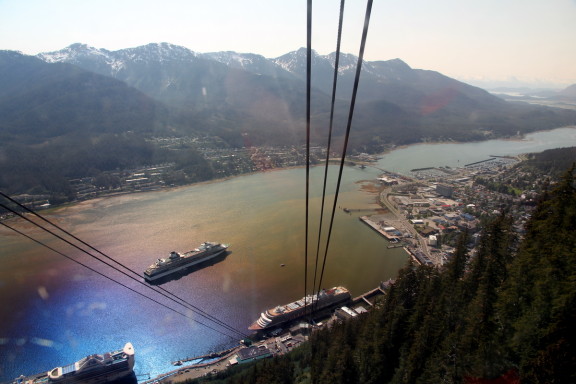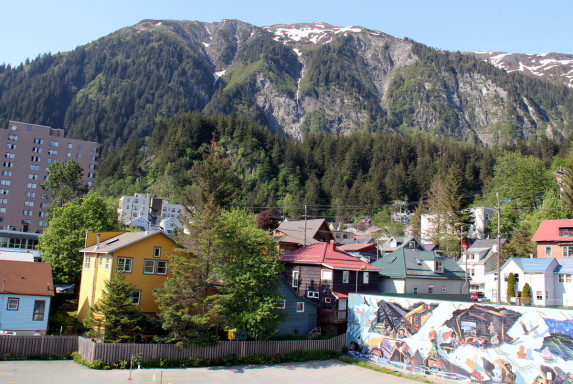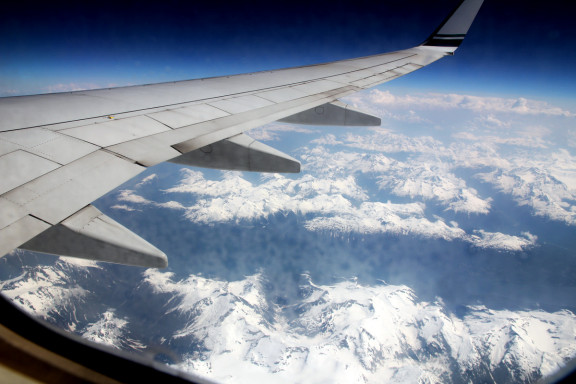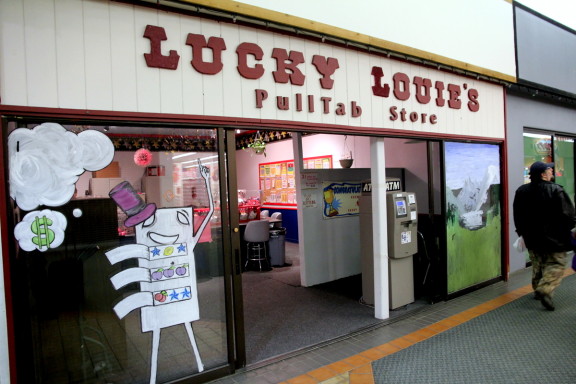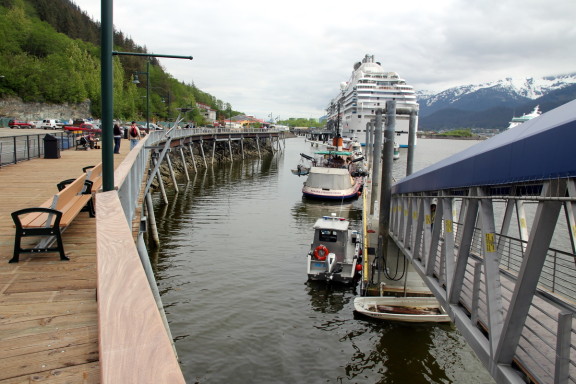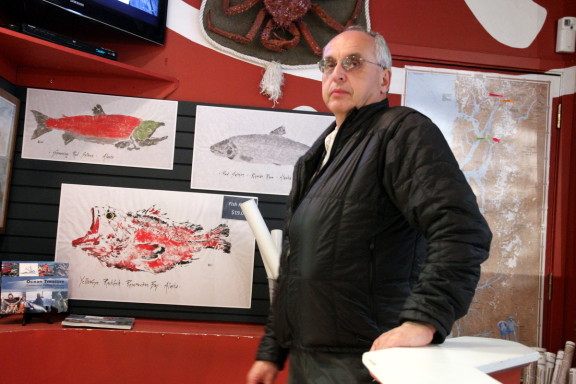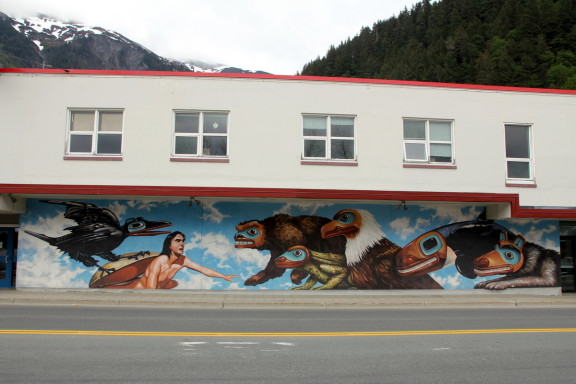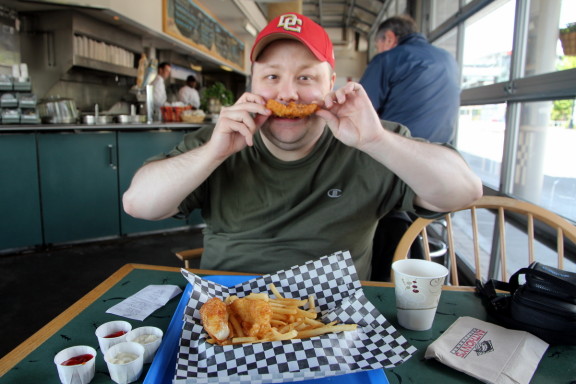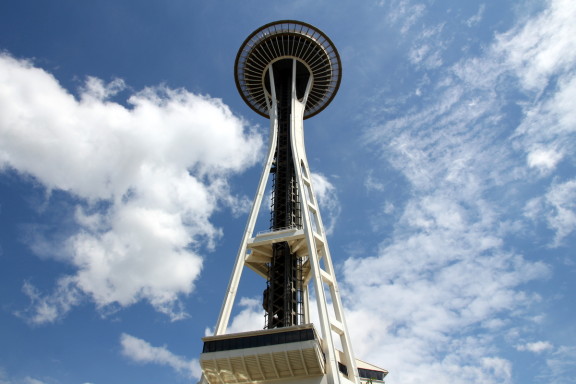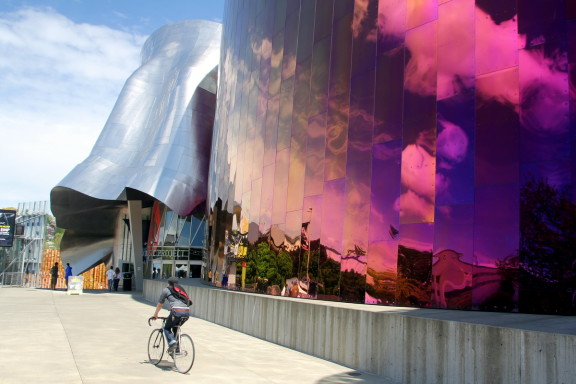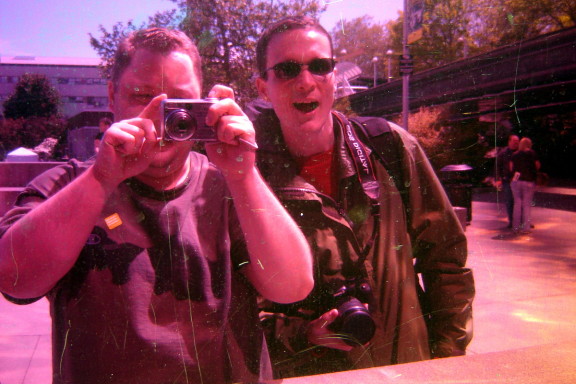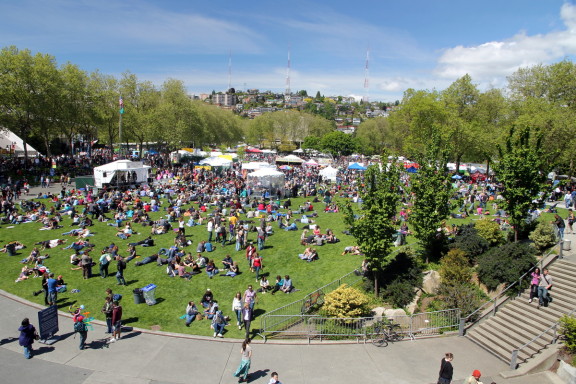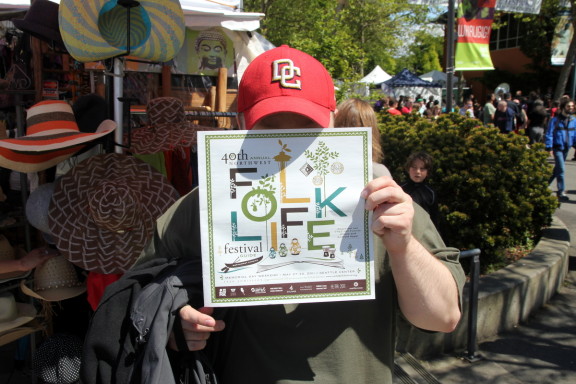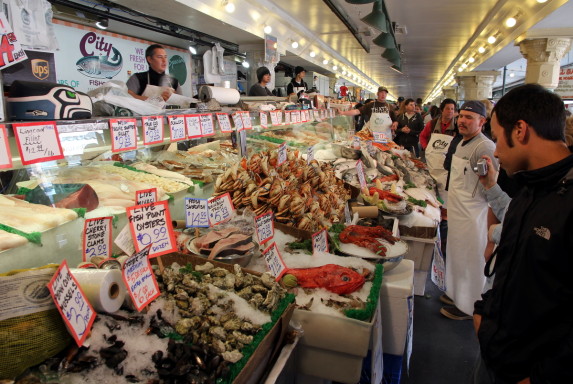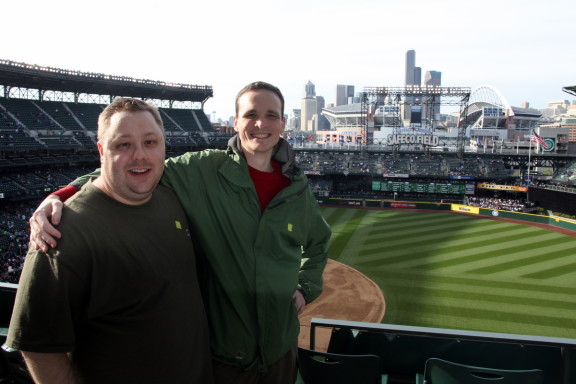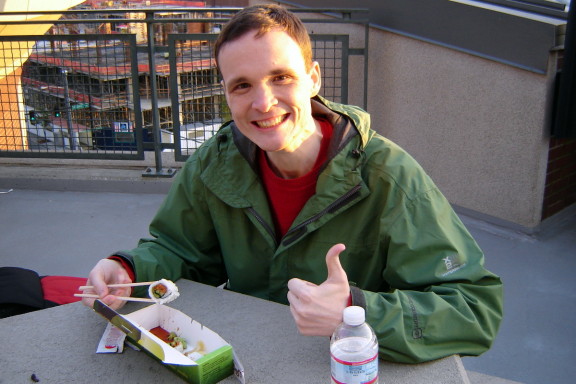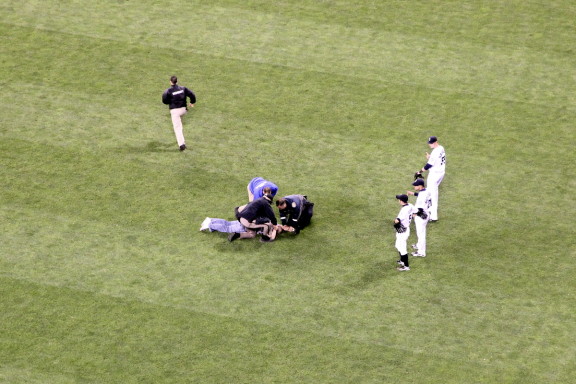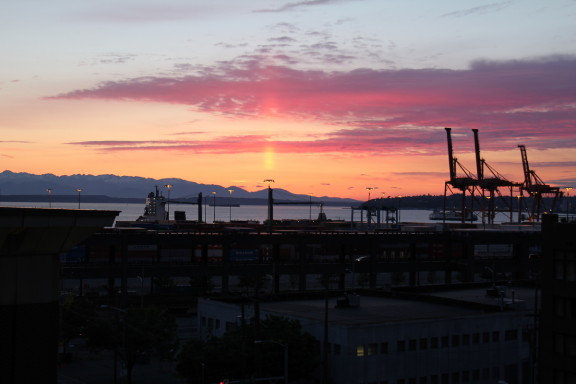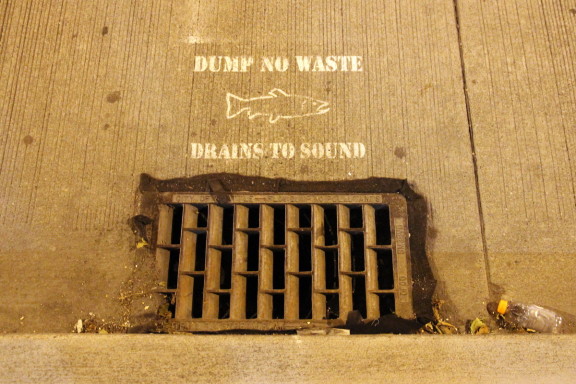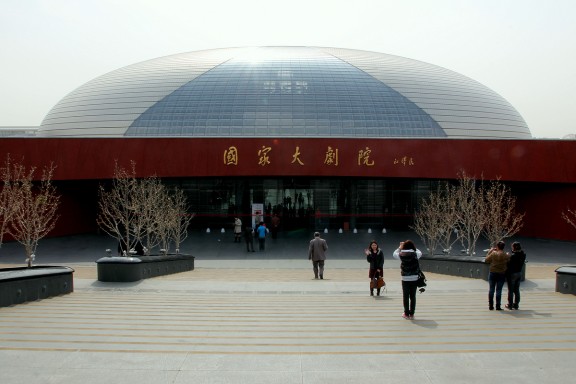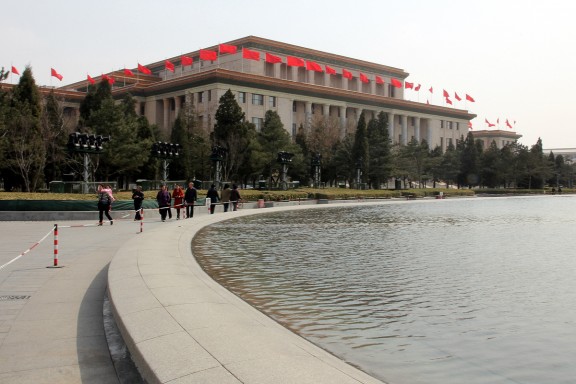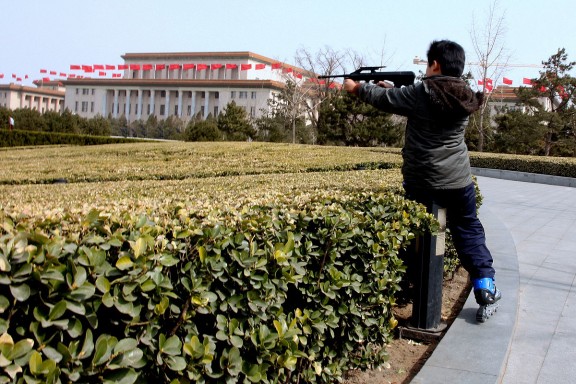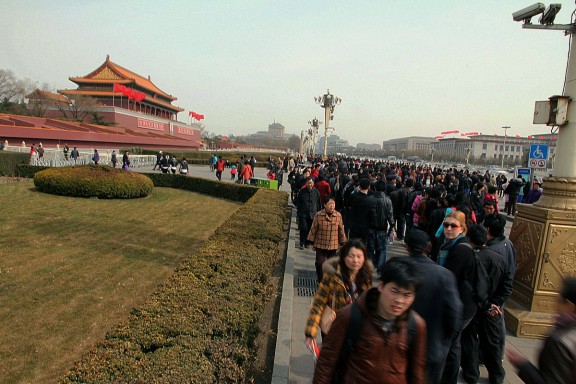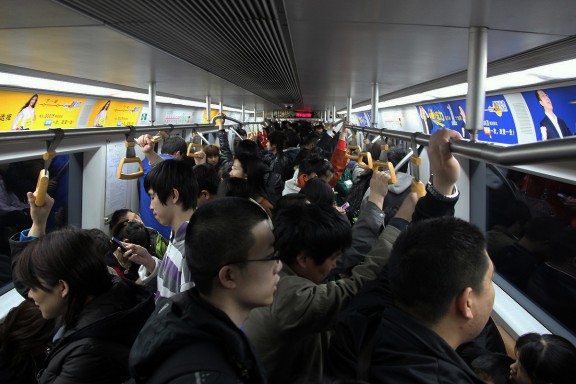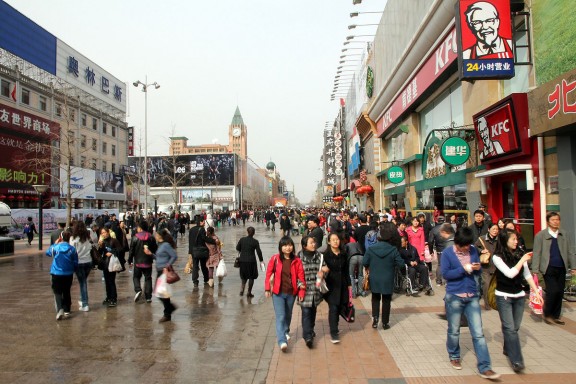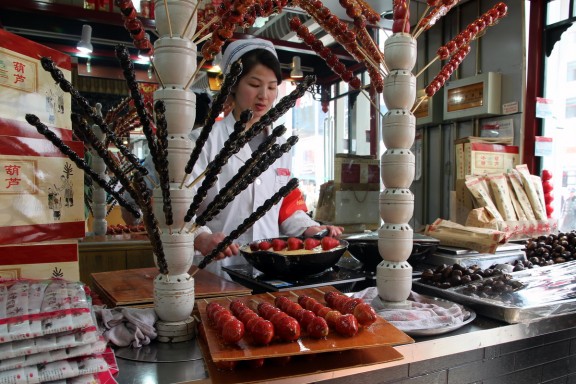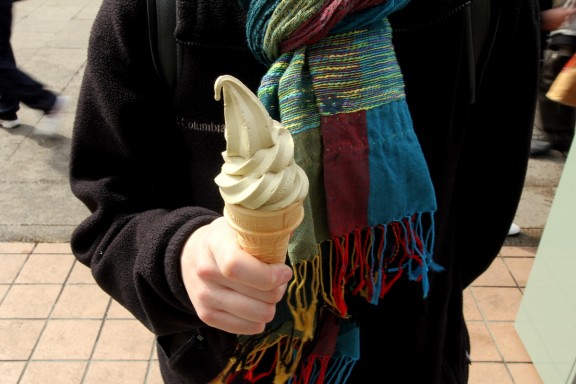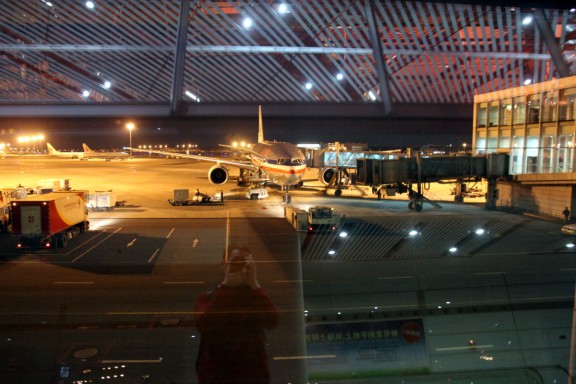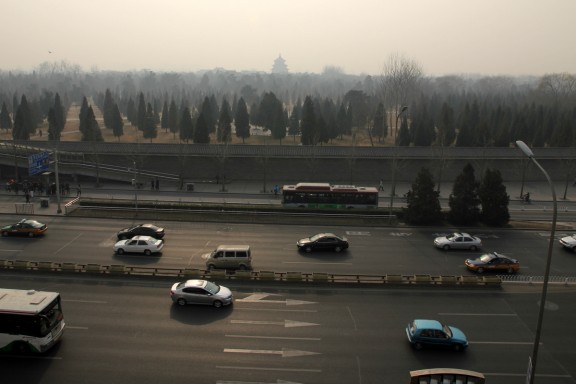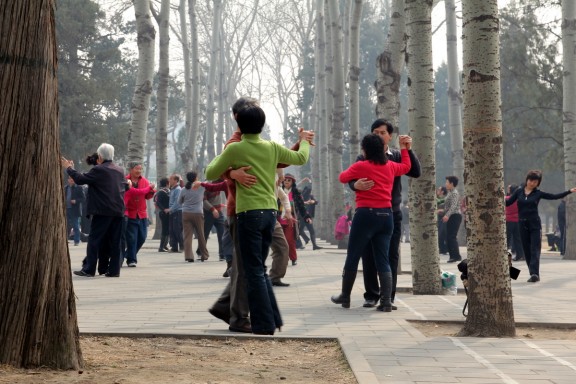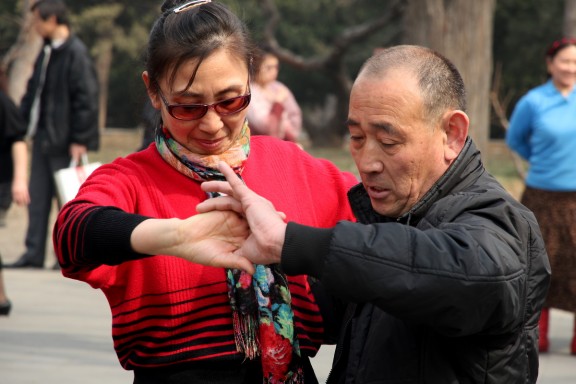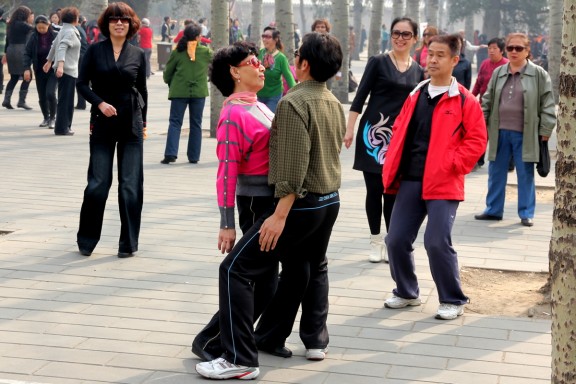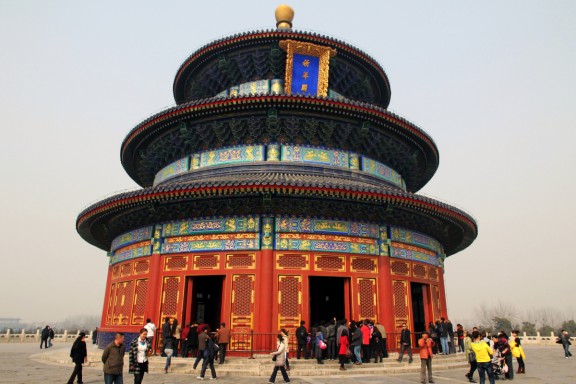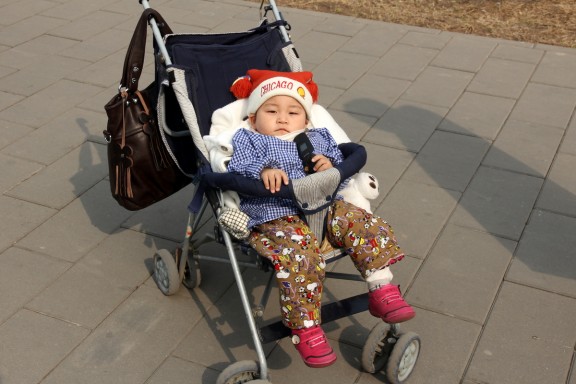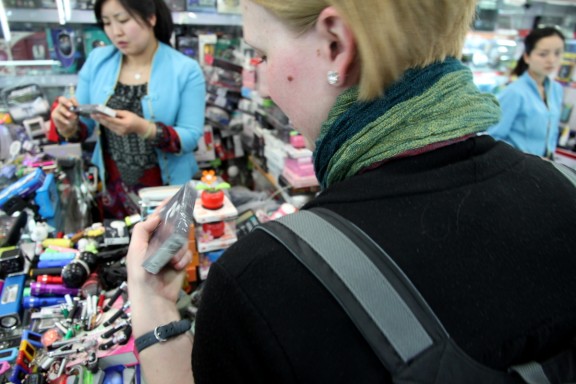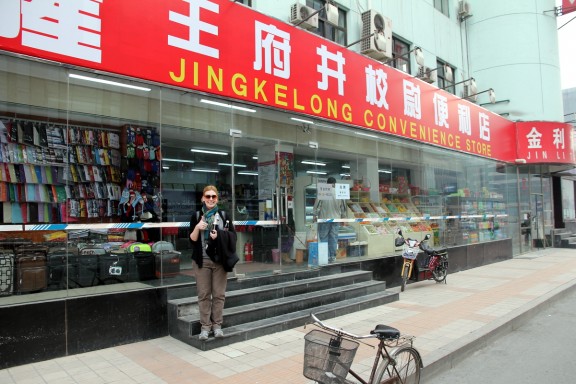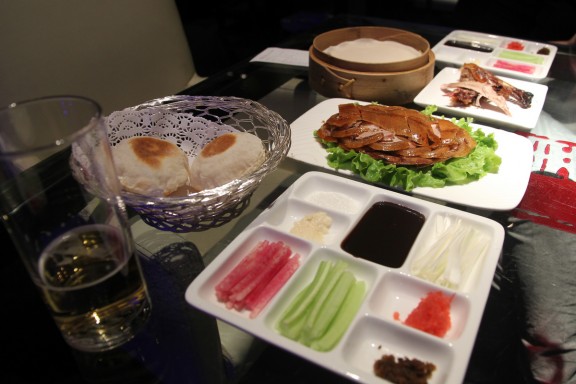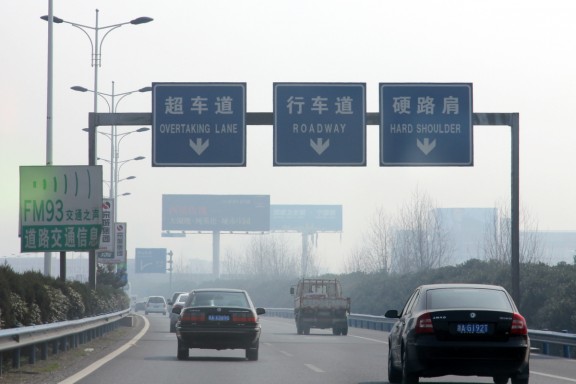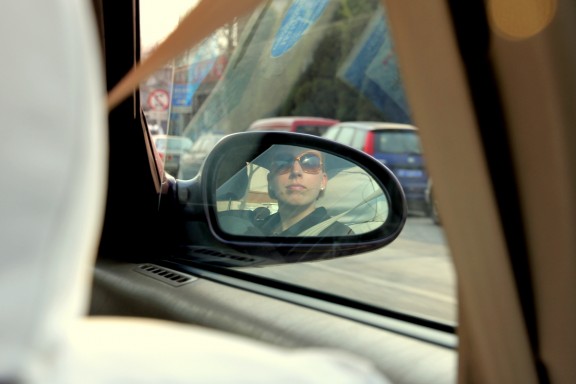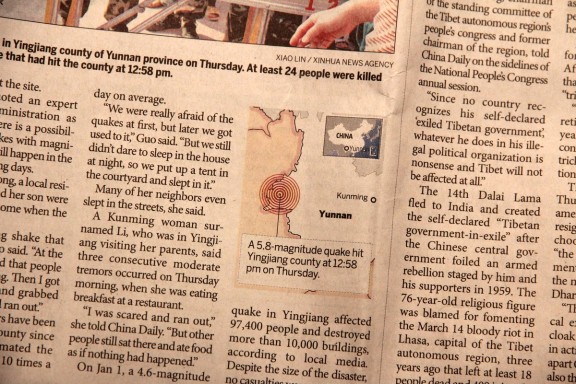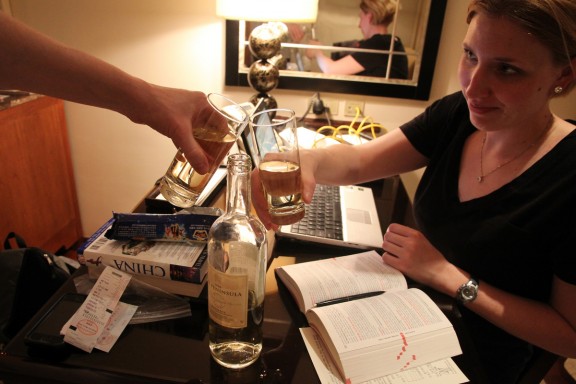Day 7: Glacier Bay
The main event during our stay at Glacier Bay Lodge is today’s eight-hour boat cruise which came as a package deal along with our two-night reservation. We were instructed to board the boat between 7 and 7:30AM at the dock behind the Lodge, so we woke up early and sat down at the restaurant for breakfast at about 6AM.
A bowl of oatmeal and a couple scrambled eggs later, we were ready to set sail. The morning weather was gloomy and overcast, with a slight, spitting rain, but everybody we spoke to said that was of little consequence when it comes to the wildlife we may or may not see during the cruise.
Glacier Bay Lodge is situated on the south shore of Bartlett Cove near the mouth of Glacier Bay. Upon exiting Bartlett Cove, our boat turned north into the Sitakaday Narrows which is just north of the Icy Strait to the south. The planned route to the far north end of the bay was roughly 60 miles each way.
A naturalist with the National Park Service greeted us and spent roughly 30 minutes giving us an introduction to the park. She spoke in such a soft and solemn manner it was kind of amusing. But she meant well and she knew her stuff, so the passengers were soon armed with a rudimentary knowledge of the kinds of critters we’d be seeing.
Shortly thereafter, the first wildlife of the day made an appearance on a gathering of small, rocky islands in the middle of the bay.
When the boat moved away from the small islands, the chorus of sea lions barking fell silent, but new wildlife continued to show up on the water surprisingly close to our ship. The back of the second deck and the top of the third deck offered outdoor viewing areas with the best chance to spot the passing visitors.
About halfway up the bay, we moved to within viewing distance of the shoreline on the starboard side of the boat. Ha, just kidding”¦ the right side of the boat. This afforded us some cool views of the mountainous landscape that used to feature glaciers, unlike deeper in the bay where those similar valleys and inlets are still frozen under ice.
After a 10-minute stop to watch the bears romp around the shoreline, we continued north to a sheer rock face dubbed “Gloomy Knob” which is a popular hangout among Glacier Bay’s mountain goats, who don’t mind operating on tiny ledges of vertical rock several hundreds of feet above the water. From our distance, the goats just looked like white dots without the aid of binoculars.
Beyond Gloomy Knob, the ship opened up its throttle a bit and made its final push north past Composite Island, Rendu Inlet and Russell Island, eventually reaching Tarr Inlet, which runs the last 10-miles before Margerie Glacier deposits itself into the deepest (unfrozen) point of Glacier Bay.
Entering Tarr Inlet, the waters were filled with chunks of glacial ice and the captain slowed down to a methodical crawl. I’m not sure if a catamaran has an advantage (or not) over a hulled ship in these waters, but there is a bit of a Titanic vibe either way when you hear the ice clunking against the ship.
Finally, four miles from the Margerie Glacier, our boat cut the engines and took a break to soak up the view. A giant cruise liner was parked only a quarter mile from the face of the glacier and helped give a sense of scale to the ice shelf — which the park ranger said is roughly the height of a 26-story building. Everybody on the boat stared at the glacier on the off-chance it should calve, but alas, nothing happened.
Eventually, the captain fired up the boat engines, turned around and carefully headed south out of the ice-cubed waters. Meanwhile, we were served a lunch of tasty wrap sandwiches. Along with clam chowder soup from earlier and peanut butter cookies yet to come, the food provided during the cruise was a nice surprise.
Back in open waters, we sailed south along the west side of the bay, where we saw Johns Hopkins Inlet, Lamplugh Glacier and Reid Glacier. Another reason we were on this side of the bay was to deposit two groups of outward-bound teenagers (roughly 15 in each group) who were on our ship in order to hitch a ride to their respective kayaking drop-off points. The catamaran served this purpose nicely, sliding right up to the shore to unload the kids and their piles of colorful gear.
After we dropped off the second group of kayakers in the middle of nowhere, the boat looked like a ghost town, with maybe 30ish passengers left to roam three decks designed for 150. Of those remaining on the boat, Tom and Ronni, a friendly couple who sat next to us, were willing to chat about everything from fishing to photography. The weather was still overcast, but the constantly-shifting clouds continued to create interesting scenery along the shore.
During our final charge south through the Whidbey Passage, I went back up to the third deck and scanned the waters for whale activity. They were definitely out there. Twice I saw whales breach in the distance, but nothing I could catch with the camera. Despite the whipping wind and some light rain in pockets, it was a good time. I’m now ready to appear on Deadliest Catch.
Back at the Lodge, I grabbed my stuff and staked out a comfortable seat near a power outlet in the lounge. Tonight, they were throwing a “Season Opening” party for the community and guests were welcome to take part. So for dinner, we just grazed thru the food stations, including the really good stuff like salmon and rib eye (normally about $30 a plate for this stuff on the restaurant menu). Sweet. Thanks Glacier Bay!
Then, as the night before, eventually everything died down, leaving me and my laptop in peace and quiet by about 11PM. I had another fun conversation with the security guard — this time covering topics such as the merits of Filson outerwear and how some local guy started “ToshCo” by purchasing things in bulk from CostCo in Juneau and shipping them to Gustavus. Eventually the party was over and I checked out for the night.
